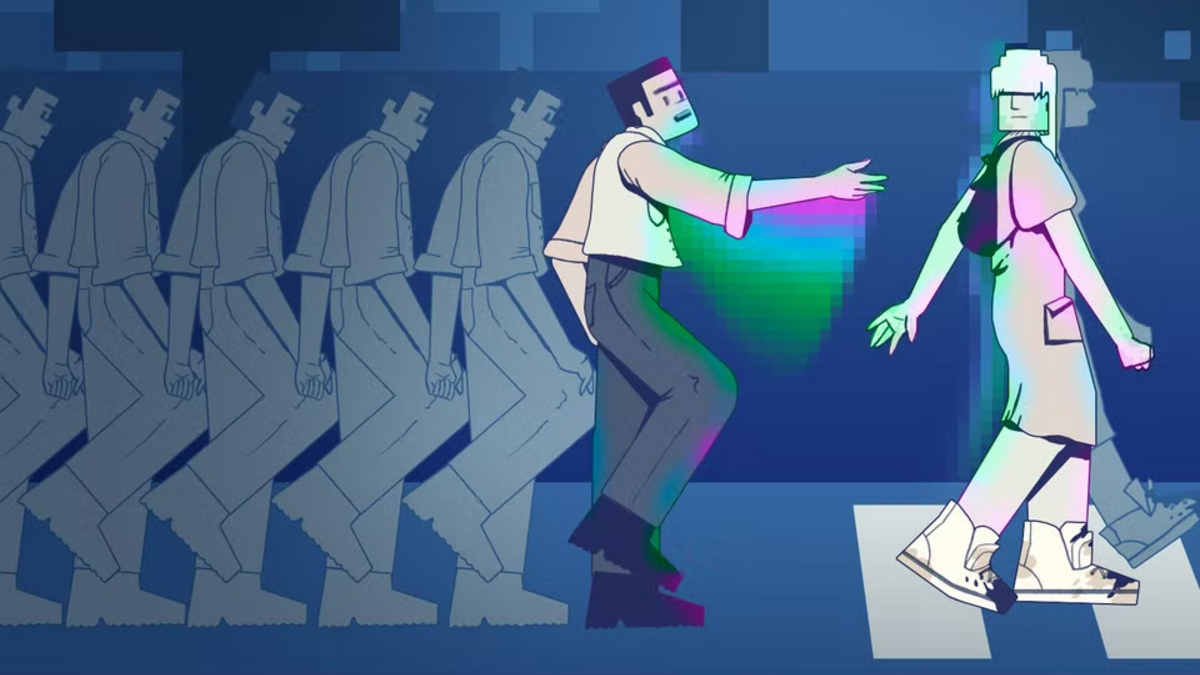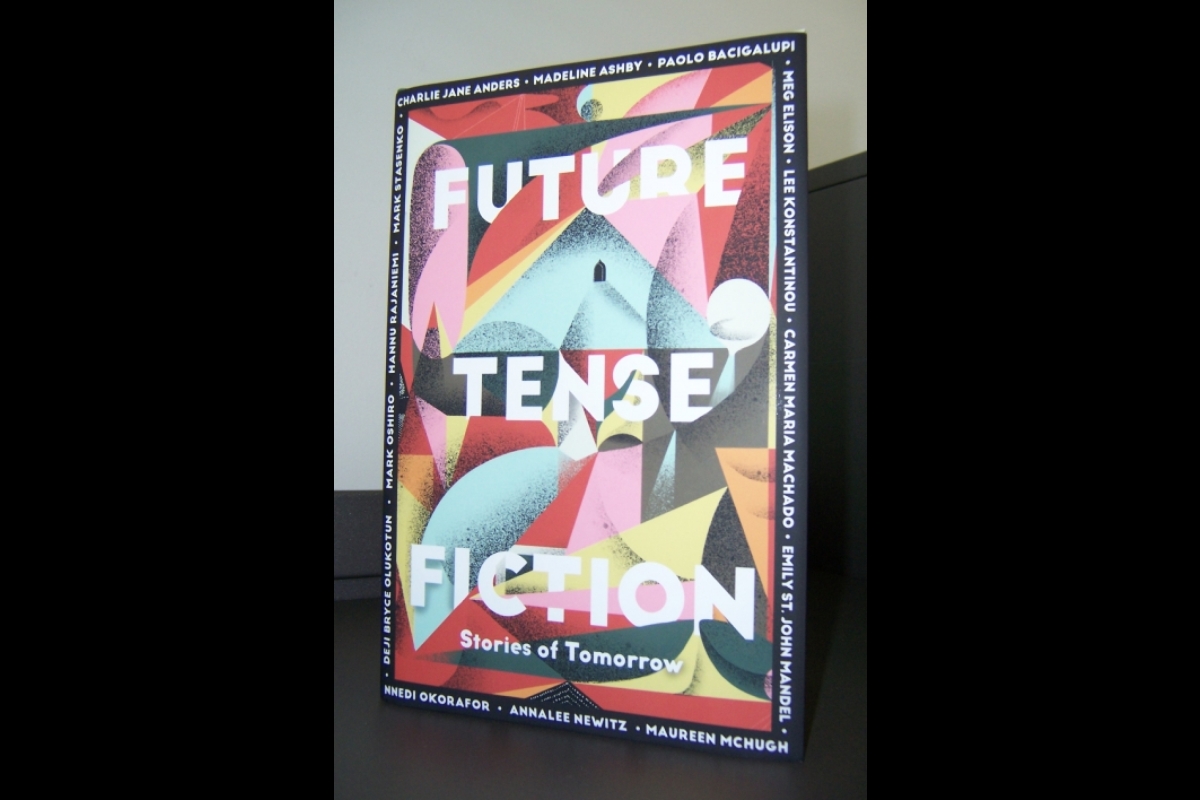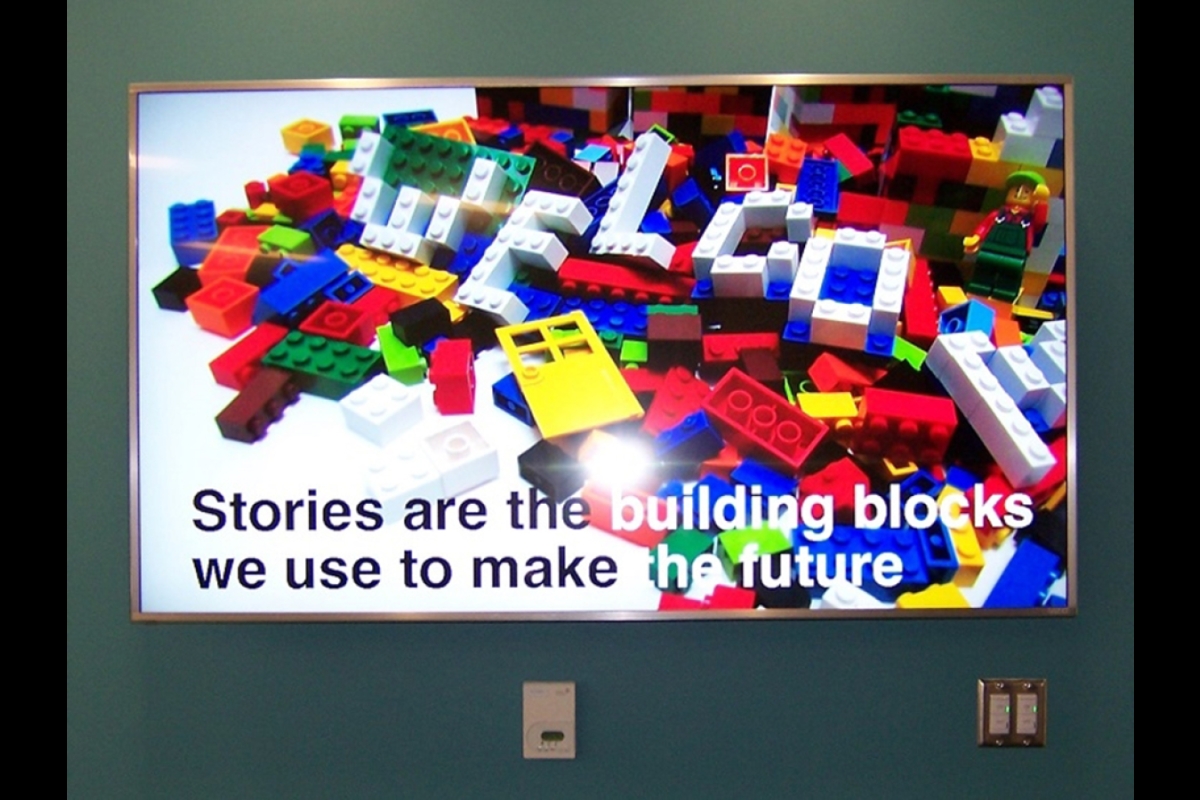ASU-Slate publication catches attention of Hollywood movie makers

Image by Natalie Matthews-Ramo/Slate
Editor’s note: This story is featured in the 2023 year in review.
An ASU partnership may have come up with a new formula for producing speculative fiction.
A short story written for Future Tense Fiction — a partnership between Arizona State University’s Center for Science and the Imagination, Slate magazine and New America — is getting the Hollywood treatment.
“This, But Again,” written by TV and film scribe David Iserson, is being adapted into a film to be directed by actor and filmmaker Ben Stiller.
A story about love, fate, memory, living in a computer simulation and a software glitch, “This, But Again” challenges readers to think about what it would be like to reexperience their entire life in a continuous loop like Marcus, the story’s protagonist. It’s the kind of near-future story that speculative fiction, and ASU’s sci-fi venture center, is made of.
“It was really exciting when I was trying to build this story for Future Tense having read a bunch of their other stories before,” Iserson said of his short story, published in June 2022. “The very nugget of an idea of this was going to be more magical than science fiction, like I wasn't going to explain it in the simulation way. But once I started thinking in terms of science, fiction and speculative fiction, it actually just made the story feel a lot more relevant to our time.”
It was that idea around near-time relevancy — and an urgent challenge from ASU President Michael Crow, following a 2011 Future Tense event in Washington, D.C. — that led to the creation of the Center for Science and the Imagination at ASU.
The chain of events was prompted by a conversation at the event between author Neal Stephenson and Crow, a sci-fi fan who believes the medium can be hugely influential in shaping public perceptions of technology and in inspiring its development, according to Future Tense Editorial Director Andrés Martinez. The task was assigned to Associate Professor Ed Finn (then a university innovation fellow) to dream up a creative portal that would bring writers like Iserson, artists, engineers and technologists together to explore optimistic outcomes for humanity through storytelling.
The rest is imagination history. A decade after its founding in 2012, the Center for Science and the Imagination is flourishing under Finn’s leadership, with attention-grabbing projects like Hieroglyph, Frankenstein 200, the Veterans Imagination Project, Climate Imagination and Future Tense Fiction.
“The reason (the center) still exists 10 years later, which is kind of mind-blowing to me, is because people are really hungry for this different relationship with the future,” Finn said. “One of the great attributes of speculative fiction is that it's essentially a zero-cost laboratory of the mind. It’s a way of inviting people into a possible future without causing anyone harm, without requiring elaborate simulations or complicated equipment. A story can invite people into contemplating transformative change in a way that they would never do in their day jobs. And it’s this audience that we're trying to reach because we’re trying to change this collective relationship with the future.”
Paving the way to Hollywood
Embracing the speculative in terms of future reach and opportunities is also proving out in an operationally creative way for the center and Future Tense Fiction. Iserson’s story is the latest Future Tense Fiction story to be optioned for adaptation by Hollywood, and it represents a noteworthy evolution of the innovative Future Tense partnership between ASU, Slate and New America.
What had begun with Future Tense’s earlier occasional fiction collaborations, published alongside its daily tech-in-society journalism on Slate, led to the monthly publication of a Future Tense Fiction story (and response essay) starting in 2018 — thanks in part to the enthusiastic fandom of Ari Lubet. The literary manager, who helped create the path to “This, But Again’s” movie option, provided the vision behind the unique partnership with production and talent management company 3 Arts Entertainment that has opened doors for other Future Tense writers and stories. Impressed by the quality of the earliest fiction stories published by Future Tense, Lubet reached out to the editors in 2017 with an invitation to collaborate.
“It’s like looking at a great movie and wanting to know who produced it,” Lubet said. "So, when we found a time for me to fly out to Arizona and meet the editors, I had a whole vision for how we could have a cooperation and a partnership. It was about representing them to create more opportunities for writers and an enriched pipeline to Hollywood. If we could work together, it would raise the profile of Future Tense and make it a brand and identity associated with quality.”
“He was wooing us hard,” said Martinez with Future Tense, which is nestled among a growing collection of media outlets that compose ASU Media Enterprise. Martinez, who is also a professor of practice in ASU’s Walter Cronkite School of Journalism and Mass Communication, says Lubet’s courtship came just as he, Finn and other members of Future Tense Fiction’s editorial team were exploring ways of leveraging the Center for Science and the Imagination's fiction work on the platform.
“(He told us) ‘you can't just do all this — curate this work, publish it on Slate, and not have the university and Future Tense participate in some way in the stories’ afterlife. And this is how we can structure this,’" Martinez said.
"We worked hard to come up with an approach that allows us to benefit from the amazing vision, credibility, and network 3 Arts brings to anything it does without impinging on the rights and rewards our authors are entitled to for their creations.”
Through Lubet and 3 Arts’ representation of Future Tense, ASU as a public university will claim rare producer credits alongside the MRC studio and Ben Stiller’s Red Hour Productions company on the film adaptation of Iserson’s Future Tense Fiction story. Iserson, whose writing credits also include the TV shows “Mr. Robot,” “Mad Men,” “New Girl” and “Saturday Night Live,” will write the screenplay. He is also represented by 3 Arts, which counts Hollywood stars Chris Evans, Tina Fey, Kevin Hart, Amy Poehler, Robert Pattinson and Issa Rae among its who’s who of clients.
As a writer in Los Angeles, Iserson says he has, over many years, toiled over many plots that never see the light of day. So, when Lubet, his manager at 3 Arts, suggested he write something for Future Tense as a short track to publication, Iserson said he went for it.
“I turned in the story, and then it was published a month or two later,” Iserson said. “It was really exciting to be able to have something turn around so quickly and be out in the world for people to experience in a quick, fast, exciting way, and Future Tense was a great place to find a home for it. I work in the film and television industry and I had a very specific idea of how I saw it (the story) as a movie. So, I was really lucky that people I’ve worked with and people I want to work with wanted to talk about it.”
Martinez, who edited Iserson’s “This, But Again,” describes working with Iserson as a real pleasure.
“He came to us with this amazingly thorough pitch, and we couldn’t stop talking about all the wrenching questions, associations and themes it evoked, which is always a good sign,” Martinez said. “Our role is to help make these stories truer to themselves and their own internal logic, and withstand any ‘but what abouts’ from the reader, though in David’s case the required tweaking was fairly minimal. It’s a beautiful story that packs a novel’s worth of plot, emotion and world-building in less than five thousand words.”
A unique partnership
In addition to Martinez and Finn, the Center for Science and the Imagination's managing editor Joey Eschrich, former Future Tense editor Torie Bosch and Future Tense’s managing editor Mia Armstrong have been the other members of the fiction project’s editorial team.
From public education to publishing, partnership and — as of recent months — podcasting, by most accounts the activity and practice in the multiverse that is Future Tense Fiction is rare and distinctive.
“As far as I know, I think we’ve invented this, and I don’t think anyone else is doing this,” said Finn, who is Future Tense’s academic director in addition to being the founding director of the Center for Science and the Imagination.
Martinez added, “It was already quite novel for a leading D.C. think tank, an established digital magazine founded by Bill Gates and a major public research university to have the kind of relationship that is Future Tense. And on top of that now we are adding a new layer, a new partner in this Hollywood management company. It is very ASU in the way we strive to engage the public in thinking about democratizing (the) understanding and governance of technology, as there is no better medium or vehicle to engage with people designing their futures than Hollywood. It’s deeply in keeping with our educational mission to find ways to curate academic expertise and translate it to the public.”
Dozens of ASU faculty members and graduate students have contributed content to Future Tense since its inception more than a decade ago, including some of its fiction stories and their response essays. They include author-scholars like Andrew Hudson; English and creative writing Professor Matt Bell; and Professor of Practice Nnedi Okorafor, who was also among the authors featured in “Stories of Tomorrow,” Future Tense Fiction’s first anthology of short stories published in 2019.
Globally, Future Tense engages with publishing partners in a number of Arabic-speaking countries, Brazil, India and, closer to home, Mexico. Future Tense editors have worked to edit and translate Spanish language sci-fi stories by renowned Mexican author Juan Villoro, Andrea Chapela and others.
Meanwhile, a new podcast is offering followers a new way to consume Future Tense Fiction stories. Launched in March 2023, each episode features a Future Tense Fiction story read by a voice actor — curated by ASU School of Music, Dance and Theatre Professor Micha Espinosa, who lent a producing hand on the project — and a conversation between the story’s author and podcast host Maddie Stone.
The first episode of the Future Tense Fiction podcast series, “When Robot and Crow Saved East St. Louis,” brought listeners into author Annalee Newitz’s near-future world in which a disease-surveillance robot gets put to the test. David Iserson’s “This, But Again” was the podcast’s second episode and featured the author narrating his own story. The third episode, to be published in MayThe third Future Tense Fiction podcast episode on the story "Collateral Damage" is slated to be available for listeners on May 27. , will highlight Justina Ireland’s Future Tense Fiction story "Collateral Damage.”
More Law, journalism and politics

Veteran journalists Jorge Ramos and Marty Baron talk democracy and free press
Arizona State University hosted "Truth Across Borders," a bilingual panel featuring two of America’s most iconic journalists, last week in the Evelyn Smith Music Theatre on Arizona State University's…
Can elections results be counted quickly yet reliably?
Election results that are released as quickly as the public demands but are reliable enough to earn wide acceptance may not always be possible.At least that's what a bipartisan panel of elections…
Spring break trip to Hawaiʻi provides insight into Indigenous law
A group of Arizona State University law students spent a week in Hawaiʻi for spring break. And while they did take in some of the sites, sounds and tastes of the tropical destination, the trip…





